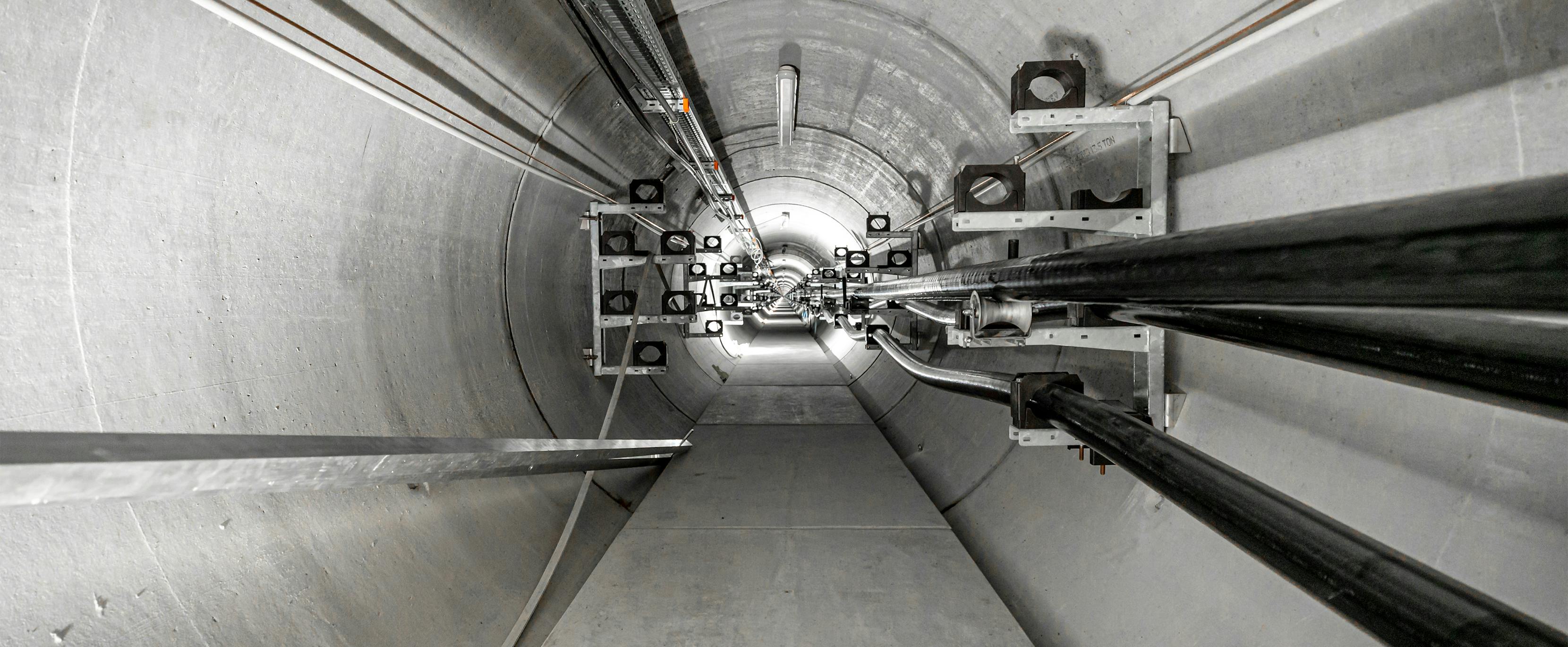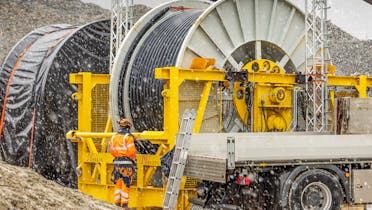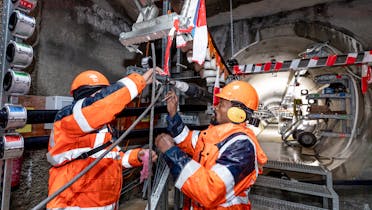
Put on your hat, it’s cold outside! As children, we all used to hear this warning from our parents before going out to play in cold winter weather. The same applies to the twelve cable reels for the La Bâtiaz – Le Verney underground link in Martigny (Canton of Valais). While the reference value for normal human body temperature is 37°C, an underground cable for an extra-high-voltage line must have a minimum temperature of 10°C for it to be correctly unwound. In this winter period, the twelve 380 kV cables, transported over a distance of around 150 km by a 50-tonne road convoy, are therefore the focus of much attention.
Manufactured at Nexans Switzerland in Cortaillod (Canton of Neuchâtel), each of the twelve reels of cable is covered with a tarpaulin before being transported to Martigny. Once on site, each cable is warmed up under a thermal protection cover to reach the critical 10°C required to carry out the cable laying work in the underground gallery.
Staggered delivery of the reels
Cable laying work usually begins once all the reels have been delivered, but the situation is different in winter. The twelve reels, each weighing 30 tonnes, are being delivered to Martigny in stages between 1 December 2021 and the end of January 2022. Once they arrive on the Verney construction site, the cables have to be warmed up to the right temperature before being installed in the gallery. Given that each cable is 1,350 m long, it’s not enough to sling a simple jacket over them to reach the right temperature. Each reel is therefore wrapped in a thermal protection cover. An electric heater then blows hot air into this protective cover, which inflates like a child’s balloon and heats the cable. This operation takes a few days, by which time the next cable has arrived in Martigny. As soon as the temperature of the first cable is deemed adequate, the thermal cover is installed on the new reel and work on laying the first cable can begin.
The crane installed on the Verney construction site then lifts the 30-tonne reel and places it on an unwinding device installed on the surface in front of the shaft entrance. Two winches have already been installed at the other end of the gallery at La Bâtiaz: an electric winch at the bottom of the shaft and a thermal winch in the substation. A steel traction wire is unwound into the gallery from La Bâtiaz. Once it reaches Le Verney, this wire is connected to the cable and the laying work can begin. The electric winch pulls the cable from La Bâtiaz with the help of three cable pushers with a pushing force of 800 kg spread throughout the gallery. Once the cable is at the bottom of the La Bâtiaz shaft, the thermal winch takes over and hoists the cable up the last few metres from the bottom of the shaft to the La Bâtiaz substation. The laying of a length of cable is done in one day.
A well-protected underground conductor cable
The diameter of each cable in this underground link is 12 cm, while the conductor at the heart of the cable, which is used to transport electricity, is only 4 cm in diameter. This is still a significant size for an underground conductor (1,000 mm2 of copper). But it is precisely this 8 cm of insulation and protection that weighs down the scales: almost 11 kg per metre compared to 9 kg per metre for the conductor, i.e. a total weight of almost 20 kg per metre of cable. The 3-cm thick polyethylene (XLPE) insulation in the centre of the cable even makes it possible to touch a 380,000 volt cable in service without any risk of electrocution.
One of the issues to be dealt with in underground line projects is the dissipation of heat generated by the current flowing through the cables. It was possible to build this underground link in Martigny due to the special geological conditions at this particular location on the Rhone plain. The gallery, which will also be equipped with a ventilation system, was drilled through multiple layers of the surrounding water table.
In service in March 2022
The gallery in the Rhone valley at Martigny, which was drilled at a depth of 10 to 20 m over a distance of 1.2 km between the La Bâtiaz substation and Le Verney, will house twelve extra-high-voltage cables. These make up the last of the three sections of the 380 kV line that connects the Nant de Drance pumped storage power station to the electricity transmission grid. The last underground section is scheduled to be commissioned at the end of March 2022.







